Miércoles 09 febrero 2022
 An enfant terrible is a precocious genius with brilliant ideas, but with a rebellious and transgressive attitude, whose creations are innovative and offer a new disruptive vision, far from the traditional, orthodox or conventional. John Galliano, Jean-Paul Gaultier, Alexander McQueen are some of the most international enfants terribles in fashion. In our country there are also provocateurs of the thread and the needle. Some of the most notorious names are recovered by the FundaciÃģ Antoni de Montpalau together with the FundaciÃģn Rocamora in a new exhibition entitled ‘DaviddelfÃn and other enfants terribles of fashion’ that opened on February 6th in Barcelona. The exhibition consists of an exhaustive compilation of the work of the designer from Malaga, unique in Catalonia, together with the groundbreaking and provocative trajectory of other Spanish designers, from the 1980s to the present.
An enfant terrible is a precocious genius with brilliant ideas, but with a rebellious and transgressive attitude, whose creations are innovative and offer a new disruptive vision, far from the traditional, orthodox or conventional. John Galliano, Jean-Paul Gaultier, Alexander McQueen are some of the most international enfants terribles in fashion. In our country there are also provocateurs of the thread and the needle. Some of the most notorious names are recovered by the FundaciÃģ Antoni de Montpalau together with the FundaciÃģn Rocamora in a new exhibition entitled ‘DaviddelfÃn and other enfants terribles of fashion’ that opened on February 6th in Barcelona. The exhibition consists of an exhaustive compilation of the work of the designer from Malaga, unique in Catalonia, together with the groundbreaking and provocative trajectory of other Spanish designers, from the 1980s to the present.

The most extensive work of David Delfin
The monographic part dedicated to David DelfÃn occupies the first floor of the Rocamora Foundation and brings together more than 60 pieces of clothing that review the designer’s collections, from 2001 to 2017, with some of the most emblematic works. Along with the pieces of clothing, a selection of accessories such as bags and shoes is also included.
Although Diego David DomÃngez GonzÃĄlez, David DelfÃn, had already carried out some previous experiments, his homonymous brand would be born in 2001 in a joint project with the Postigo brothers (Deborah, Gorka and Diego) and Bimba BosÃĐ, the designer’s muse and model. This innovative project went beyond fashion, mixing theatre, music, painting, poetry, photography and cinema. As a brand, DavidelfÃn debut in Barcelona on the alternative catwalk show Circuit with its first ‘Openin’ Nite’ collection. A year later he make the leap to the Cibeles catwalk in Madrid with the proposal ‘Cour des Miracles’, inspired by Luis BuÃąuel’s films ‘Viriadina’ and ‘Belle de Jour’ and also in the painting ‘Los Amantes’ by RenÃĐ Margritte , painted in 1928, showing two hooded lovers kissing.
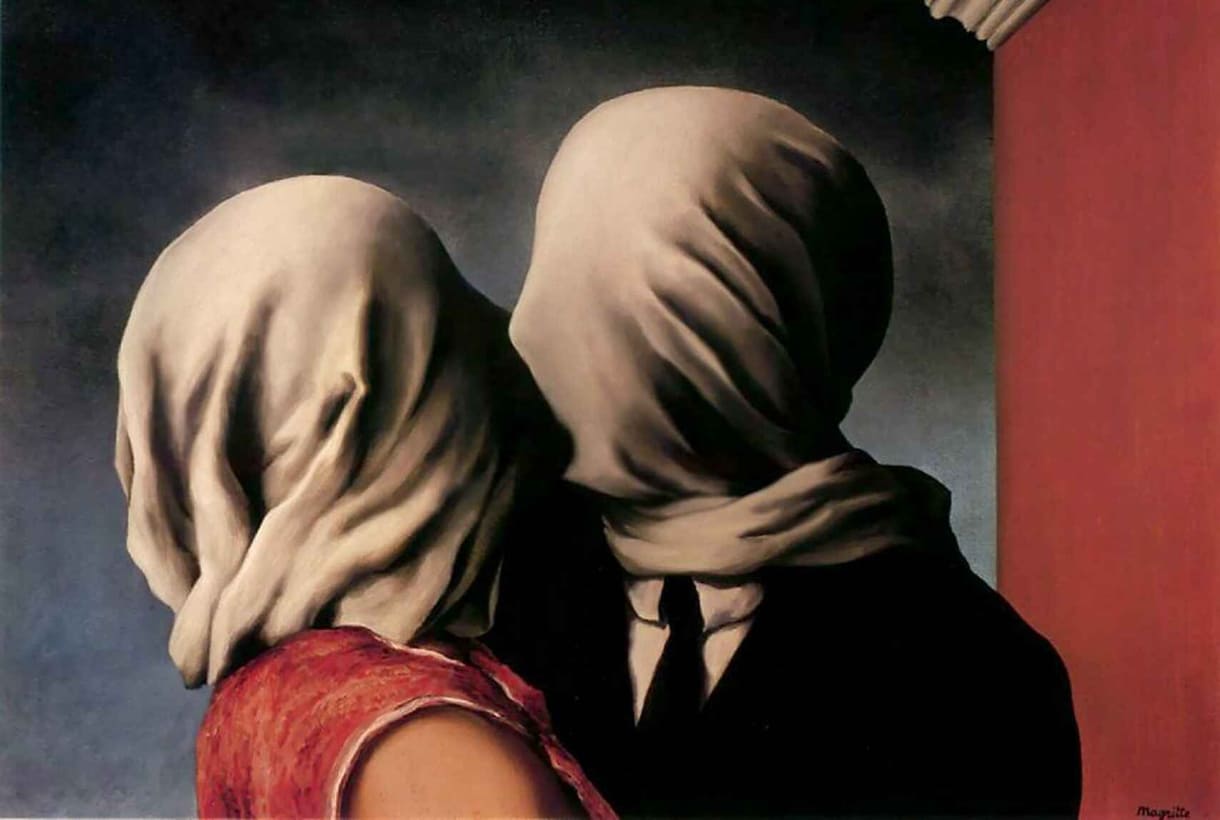
As a tribute to Magritte’s painting, the models paraded down the catwalk with hooded faces reminiscent of Arab burkas, ropes around their necks and large wooden rosaries, some garments made with sanitary bandages. This parade was misunderstood and criticized in the media, perhaps for coinciding with the war in Afghanistan. Despite the controversy, this show positioned the brand and a year later, DavidelfÃn would receive the L’Oreal award for young designers. From this moment on, the designer’s self-taught creativity had no limits: Bimba BosÃĐ would be the indispensable protagonist of his fashion shows and among the public and their friends, they would become his best ambassadors. The designer continued to present his collections at Cibeles and made the leap to New York in 2009 and 2010. The brand was also awarded at Marie Claire, Telva and in 2016, won the National Fashion Design Award. DavidelfÃn also participated in numerous museums, institutions and art galleries in Barcelona, ââMadrid, Bilbao, MÃĄlaga, Venice, New York, Washington, Mexico, Tokyo and Moscow. Unfortunately, the promising creator’s career was cut short in 2017 after an intense battle with brain cancer, a few months after Bimba’s death. David Delfin was only 46 years old.

The other enfants terribles
The exhibition goes one step further and to accompany the tribute to DavidelfÃn, the FundaciÃģ Antonio de Montpalau has chosen a series of designers who have also known how to break the mold and occupy the ground floor of Manuel Rocamora’s summer mansion.
Thus, this second part of the exhibition begins with Luis Fortes, the controversial designer of the 1980s in Barcelona with very daring proposals that even anticipated those that Thierry Mugler, a recently deceased French creator, would make shortly after.

From Madrid in the 1990s, the Vacas Flacas duo, made up of Carolina Azcona and Miriam Cobo, would create a fuss at the Cibeles Catwalk with their garments made of cloths, gloves, towels, socks, zips or scarves. A good selection of that can be seen in the exhibition, along with a spectacular coat made with Barça scarves. Recently the actress Milena Smit has resurrected one of the most emblematic t-shirts of the Madrid firm. The sample also includes five spectacular Alaskan costumes, designed by Juan Pedro del Moral, Little Joe Couture, who has also designed the styling of the Blonde Nancys. In fact, the brand is also in charge of dressing the members of Fangoria. Also from the 1990s are the two pieces included in the exhibition by Estanislao, the creator of the renowned Eometric pattern-making method.

For her part, Bibian Blue, a designer famous for her bodysuits worn by international artists such as Katy Perry or Dolly Parton, was one of Luis Fortes’ most outstanding students in the 1990s and created her own brand in 2000, achieving great acceptance within the European underground scene. The sample includes one of her spectacular butterfly wing dresses.
The exhibition also makes reference to Mertxe HernÃĄndez. The designer created her MTC brand in 1997 and opened a store in El Born, where she became known. After presenting collections in Germany, the creator decided to dedicate herself to the world of artistic creation. Some of the garments that she presented on the ‘Colonia Fashion Days’ catwalk, made with polyamide stockings, are included.
Finally, the exhibition also brings together iconic garments from Gori de Palma (Modafad, Gaudà and Cibeles) and ¥Ãnimo, Valiente! The firm of a Basque designer based in Barcelona who works with recycled jeans and from a decided marginality. Who also deserves a special mention is the latest designer to participate in the show: the current and mediatic Palomo Spain, who included one of the most emblematic suits of his meteoric career.


 Who was Pedro Rovira? Why has his work been hidden for decades if it was one of the great Spanish tailors? Coinciding with the centenary of the birth of the dressmaker Pere Rovira i Planas (1921-1978), the Badalona Museum pays tribute to one of their illustrious sons with a wide retrospective that recovers the figure and contemporary spirit of the Badalona born couturier’s legacy .
Who was Pedro Rovira? Why has his work been hidden for decades if it was one of the great Spanish tailors? Coinciding with the centenary of the birth of the dressmaker Pere Rovira i Planas (1921-1978), the Badalona Museum pays tribute to one of their illustrious sons with a wide retrospective that recovers the figure and contemporary spirit of the Badalona born couturier’s legacy .
In an illustrated monograph recently presented in parallel to the exhibition, Lorenzo Caprile assures in his prologue that Pedro Rovira âwas in the middle of it all, but he stayed halfwayâ, referring to his premature death that prevented him from becoming a legend. The designer managed to develop his own identity throughout his career and was able to embrace two opposing currents: he began working with more classic Haute Couture through exclusive collections and later took a turn towards democratic fashion with more versatile and plural series productions that brought design closer to the new generations of consumers, beyond the bourgeois elites. On a historical level, his legacy also coincides in a time of transition: from the end of the dictatorship to the beginning of a new democracy with new customs, needs and ways of conceiving fashion.

From the oven to the needle
Pedro Rovira’s family owned a bakery in Badalona, ââbut since childhood he had a great passion for sewing, making dresses for his friends’ dolls or painting figurines. A hobby his father did not like. He began studying medicine, but quickly abandoned the career for another job related to the needle: Celso RoldÃģs, from Badalona, ââa tailor officer at the prestigious Santa Eulalia house in Barcelona, ââtaught him the trade. Very soon Rovira would fulfill his wish to travel to Paris in search of new opportunities. He had high ambitions and he wanted to perfect his technique. In the French capital he became friends with CristÃģbal Balenciaga, who would influence him greatly in his early days. In Paris he soaked up two years of trends through the fashion shows of the leading dressmakers of the time. When he returned in 1948, he founded his own haute couture workshop in Barcelona, ââin the Gracia neighborhood, although he continued to live in Badalona.Â

Boom and internationalization
Pedro Rovira’s fame spread like wildfire in the 1950s. The designer’s savoir faire, thanks to his Parisian background, together with his personal magnetism, quickly led to the recognition of the Catalan bourgeoisie with the support of several high-ranking ladies society who were assiduous to their refined designs. Later, when the Balenciaga atelier closed in 1968, some of the Basque dressmaker’s clients such as the Marchioness of Torroella de MongrÃ, MarÃa del Carmen Ferrer-Cajigal and her daughter Carmen de Robert would also knock on Rovira’s door. In fact, Pedro Rovira was adept at dressing several generations of women from the same family with versatile and flexible designs that were adapted to every occasion. For Rovira, fashion was a servitude.

At the end of the 1950s, Pedro Rovira’s fame spread throughout Europe with shows in Frankfurt, Stockholm, Milan and Venice, and in 1964 his designs reached New York, seducing the North American public. On those trips he was accompanied by the most illustrious models of the moment who acted as ambassadors of his style: MarÃa del Carmen Aznar, Carmen ParÃĐ and Isabel MartÃn were the most common. Later, with the boom in ready-to-wear collections, he would work with the model and businesswoman Francina DÃaz, the actress Teresa Gimpera and some sporadic ones like Nati Abascal, photographed by Antoni Bernad. International success continued in the sixties and seventies with criticism in their pockets and Rovira’s designs appeared on the pages of prestigious magazines such as Vogue, Harper’s Bazaar, Elle, Marie Claire. After being acclaimed internationally and gaining recognition from specialized critics, in 1964, finally Rovira was admitted to the Cooperative of Haute Couture, which brought together the most elite fashion designers of the country as Pedro Rodriguez, Asuncion Bastida, Manuel Pertegaz, Santa Eulalia and the Floating Dam, considered the Big Five of Spanish Fashion. Carmen Mir also joined the cooperative the same year as Rovira.

The year 1968 was historical for Pedro Rovira. In full expansion of the brand, the designer decided to launch the first collection of democratic fashion with different lines for all ages, occasions and moments. That was a remarkable breakthrough in the history of Spanish fashion because despite some attempts by other designers, serialized proposals have never been launched with designer garments at more affordable prices. Pedro Rovira’s ready-to-wear designs were daring but very wearable. They combined fantasy brought to the street through geometric fabrics, graphic prints and vibrant colors for a cosmopolitan and contemporary woman who embraced the society of change in Spain.

An unexpected end
In the early seventies the brand had two boutiques in Madrid and throughout the country. Just when the firm was experiencing its greatest splendor, there was a setback that condemned it to a sudden fall and later oblivion: the designer’s precipitous death from a heart attack in 1978. He was only 57 years old. The firm that bore his name still worked for a time, since it had achieved a lot of diffusion and presence in the market, but without the claim and the great creative power of Rovira, the brand had to close in 1980.

An extensive legacy
After a first tribute at the Madrid Costume Museum by the FundaciÃģ Antoni de Montpalau, the Barcelona Museum has displayed all of Pedro Rovira’s work in a large retrospective exhibition dedicated to the couturier to commemorate the centenary of his birth. This exhibition, open from 4th June 4 to 18th October 2021, represents a broad and complete review of the work of the Badalona born couturier: it occupies two floors of the museum and is arranged chronologically following the production of Rovira from the early 1950s to the last collections from 1978. Some eighty dresses and more than one hundred drawings come from the Col·lecciÃģ Antonio de Montpalau, collaborator of the initiative, and pieces from the Badalona Museum collection and from the Rovira heirs are also exhibited. The tribute is completed by a documentary that rescues the memory of his legacy and a widely illustrated monograph. An extensive tribute to resuscitate the great figure of Pedro Rovira from oblivion and place it where it deserves in the history of Spanish fashion.
 They have done it again. Mans Concept Menswear has won another distinction that recognizes the originality, good know-how and future projection of this revolutionary men’s tailoring firm created by Jaime Ãlvarez (Seville, 1994).Â
They have done it again. Mans Concept Menswear has won another distinction that recognizes the originality, good know-how and future projection of this revolutionary men’s tailoring firm created by Jaime Ãlvarez (Seville, 1994).Â
This time, MANS has been the winner of the 2020 Vogue Whoâs On Next award, a prestigious award that after nine consecutive years supporting emerging talent has become the most important in Spanish fashion by being endowed with 100,000 euros to develop a business plan, thanks to the collaboration of Inditex. This awards also includes enrollment in ACME (Association of Fashion Designers of Spain) without passing the vote of the General Assembly and the opportunity to participate in the next edition of Mercedes-Benz Fashion Week Madrid. In addition to the support and editorial coverage of Vogue Spain magazine. Thus, Mans Concept finally prevailed over the other two finalists for the award: Dominnico and YnÃĐsuelves.

A conceptual twist on traditional tailoring
And why Mans? What makes it special? If you still do not know the firm, you should carry on reading.  Mans Concept originates in 2017, in the thesis project of the young Sevillian, Jaime Ãlvarez after his studies in Fashion Design at the IED in Madrid. Its purpose was revolutionary: to forge a new concept of masculinity through tailoring, challenging its more traditional codes. Actually, the name Mans comes from Demans, which is of German origin and one of the surnames of the designer and creative director of the brand. Shortening it to ‘ Mans ‘ indicates the search for a new, more personal and updated tailoring. A new approach to modern man. And that’s the main purpose of this visionary pret-a-porter brand.

Thus, Mans Concept focuses on bespoke men’s tailoring based on the reinterpretation of classic patterns. In fact, the firm is influenced both by the ‘ Saville Row ‘ workshops and by Japanese techniques, both present in all its collections. What makes Jaime Ãlvarez’s signature different is that emphasis on lines, refining cuts and achieving an avant-garde image in silhouettes and finishes that do not lose the traditional essence. The firm seeks a masculine aesthetic adapted to today with clean cuts, colours at the service of the concept and innovation in the fabrics that are personally chosen by Ãlvarez himself and are exported from England, Italy, Japan and Spain, GratacÃģs being one of its regular suppliers. With all this raw material, Mans Concept designs and produces locally, two annual collections with clothing that is positioned within the medium-luxury sector and in which each piece has its own detail. The objective is to offer a complete and hybrid masculine wardrobe with basic quality garments, versatile and a progressive design, focused on people who are sure of themselves and what they are looking for.

In its short career, Mans Concept has participated four times in the 080 Barcelona Fashion catwalk and has received the Best Emerging Design award on three of them, and has also walked the MBFW Madrid catwalk on another occasion.
The announcement of Mans Concept as the winning firm of the ninth edition of Vogue Whoâs On Next also marks the verification of the creative drive of a new batch of Spanish designers whose common link is the love for clothing made in Spain, the appreciation for craftsmanship, the breakdown of gender barriers, and an international projection that leaves its mark on various red carpets. They call it the WON generation, made up of winners from previous editions such as Marcela Mansergas (2012), Juan Vidal (2013), Maria ke Fisherman (2014), ManÃĐManÃĐ (2015), MoisÃĐs Nieto (2016), Leandro Cano (2017), Palomo Spain (2018), Carlota Barrera (2019) and, the latest incorporation Mans Concept (2020).
Congratulations Jaime Alvarez for this distinction!





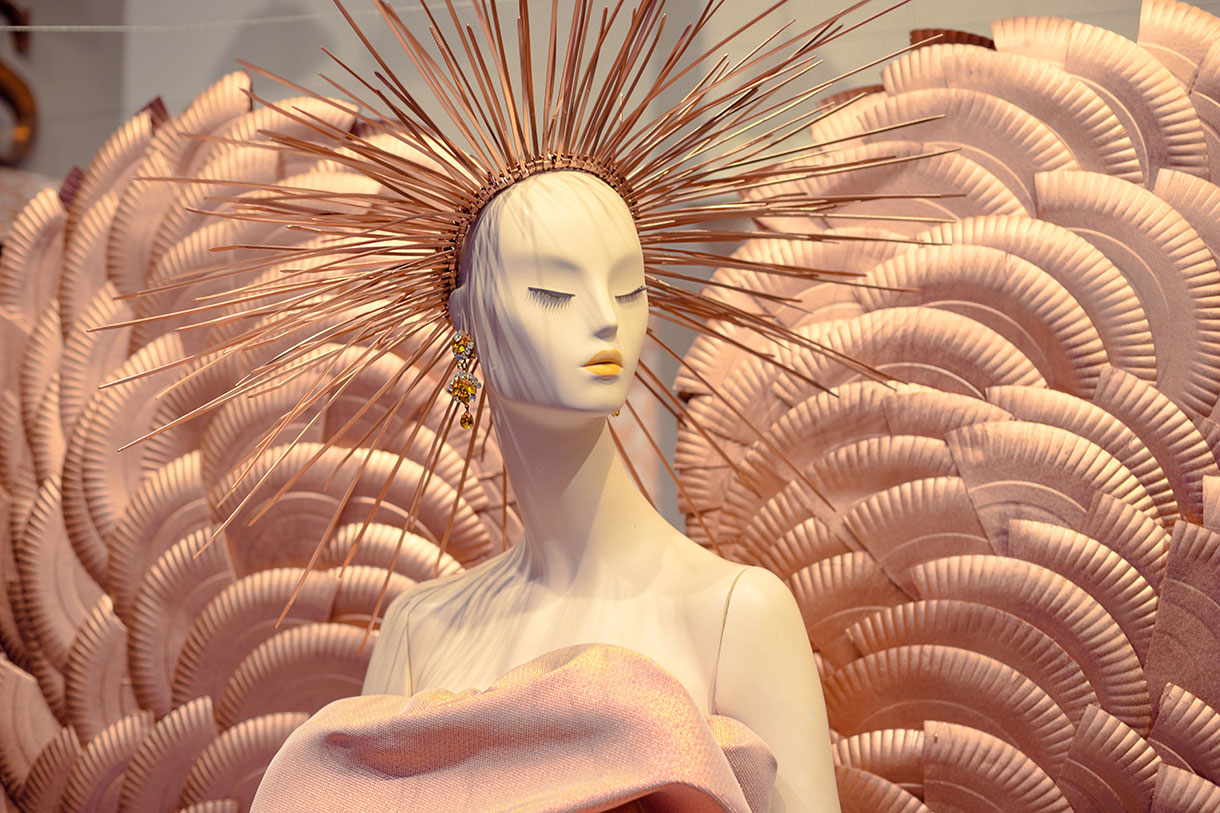
And the time has come! The time of the party and debauchery. Ornate garments and fabrics with sparkles that shine with their own light for daily celebrations accompanied by long nights that demand a more lavish dress code, where creativity and fantasy work at the service of sophistication. Those festive looks that bring out the best version of oneself because it is already known that the most shining âmeâ lives at Christmas. An era that us at GratacÃģs especially like for all its cultural and religious symbolism.
At this time of celebrations we want to show you the most fantasy collection of winter. That where gold and silver are the protagonists of the most sumptuous fabrics that gain in compositional richness, touch and volume. Also it is time to approach other products that explore the fantastical side of fashion through sequins, rhinestones, embroidery and metallic threads, among others.
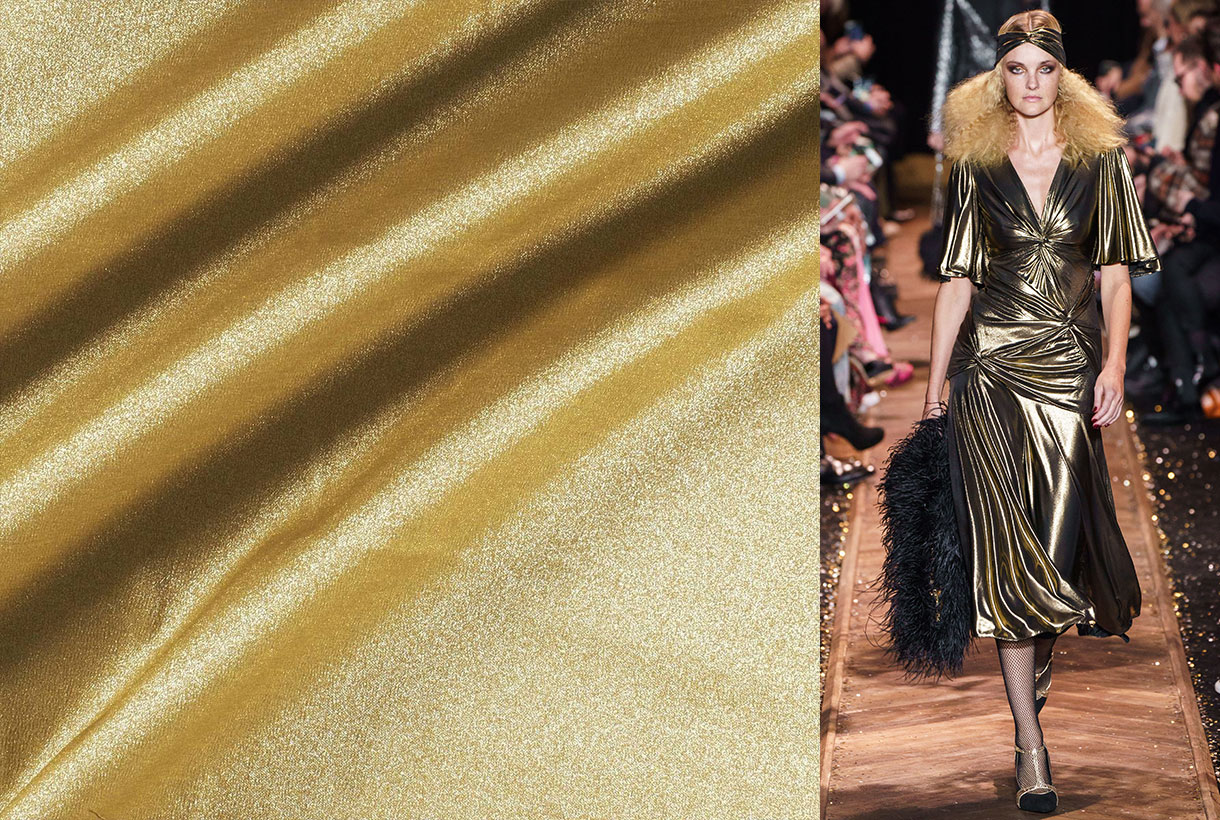
Gold
Did you know that the gold colour is neither the most loved nor the most hated? And yet it is a tone that has double standards in terms of meaning. In its splendorous side, gold is associated with beauty, triumph, wealth and happiness. It is a symbol of courage and power. On its dark side, this precious metal also has strong links with materialism, vanity and even arrogance. The treasures are golden or the majestic palace of Versailles surrenders to gold, which is associated with luxury in its maximum opulence. In terms of fabrics, we pay homage to gold through pleats, sequins, embroidery and lamÃĐs, which create soft golden layers in more colourful or muted tones.
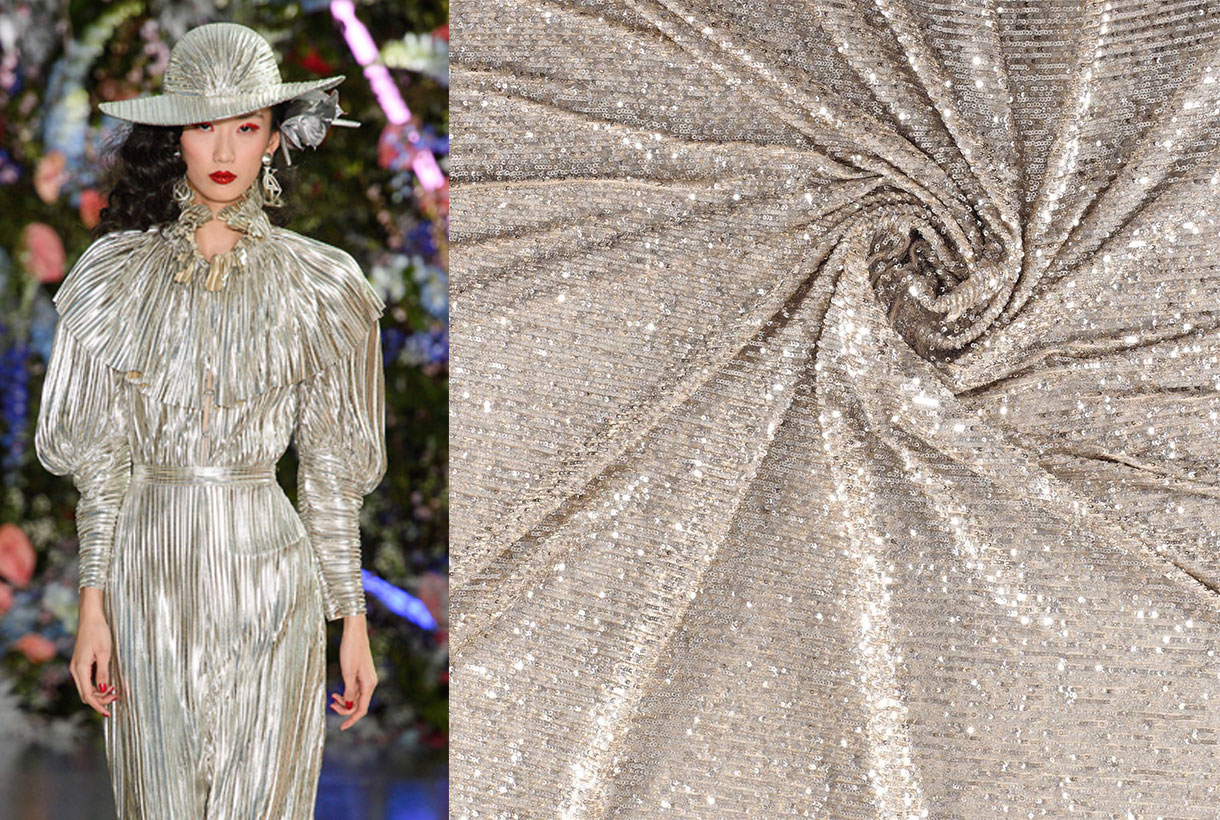
Silver
Silver is the colour that comes from the metal that gives it its name, silver. The first associations to this fashionable tone have to do with wealth, money or success, but also with coldness, greed or arrogance. Like its golden brother, it has an antagonistic connotation. Looking at the positive side of colour, silver is a tone also linked to luxury and partying that is associated with innovation, the future, movement and progress. It is not in vain that silver will dress future trends, avant-garde architecture, technological mechanisms or the most innovative developments. In fabrics, we highlight the inexhaustible sequins that are so successful during the festive season and the metallic sparkles of lame. Also some space-themed fantasy fabric.
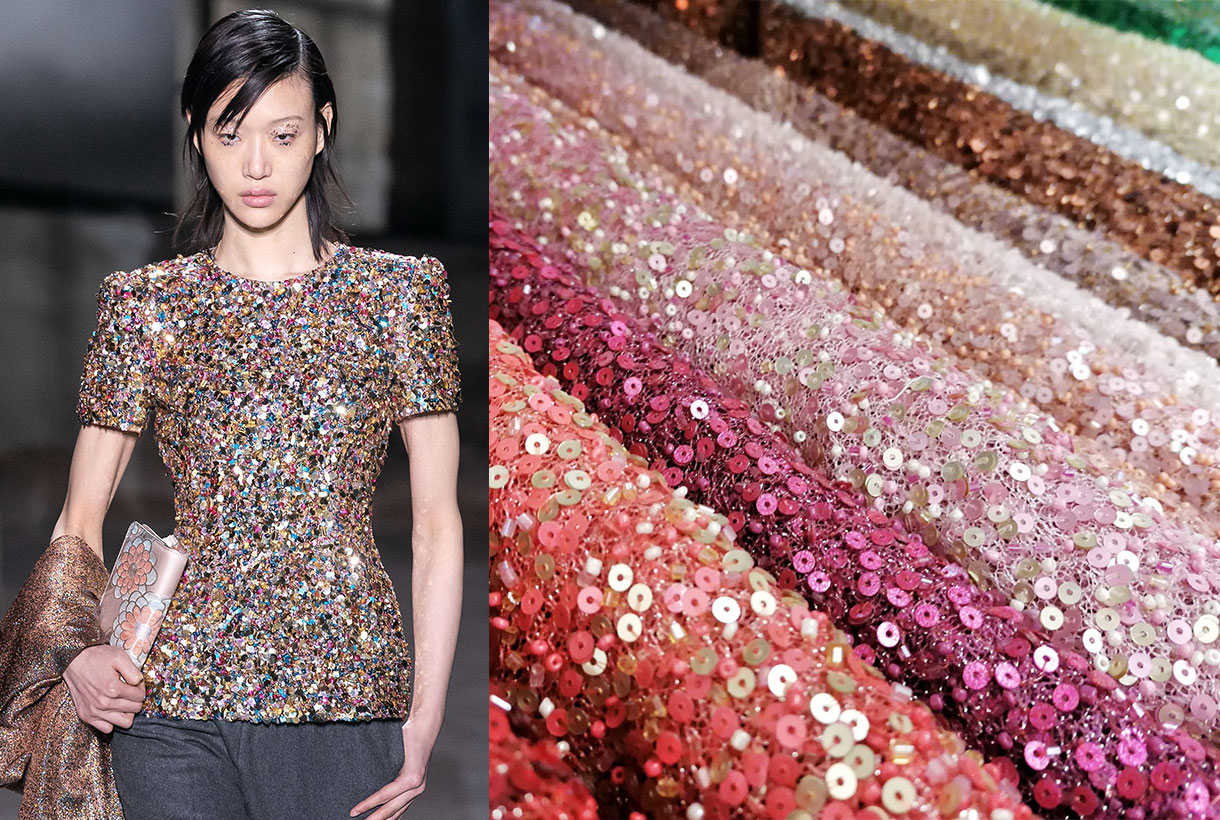
Long life to colour
Not all the colour palette linked to partying has to do with metallic tones and the important thing is to choose fabrics that attract light through their fascinating sparkles. This season the games consists in the variety, the key lies in the brightness of the fabric. Thus, in our space the attractive emerald greens coexist, with the femininity of the powdered pinks, the enigmatic mauve and violet and the bet that never fails: the red classic in all its versions. From the vibrant crimson to the elegant maroon. Which one fits you the most?
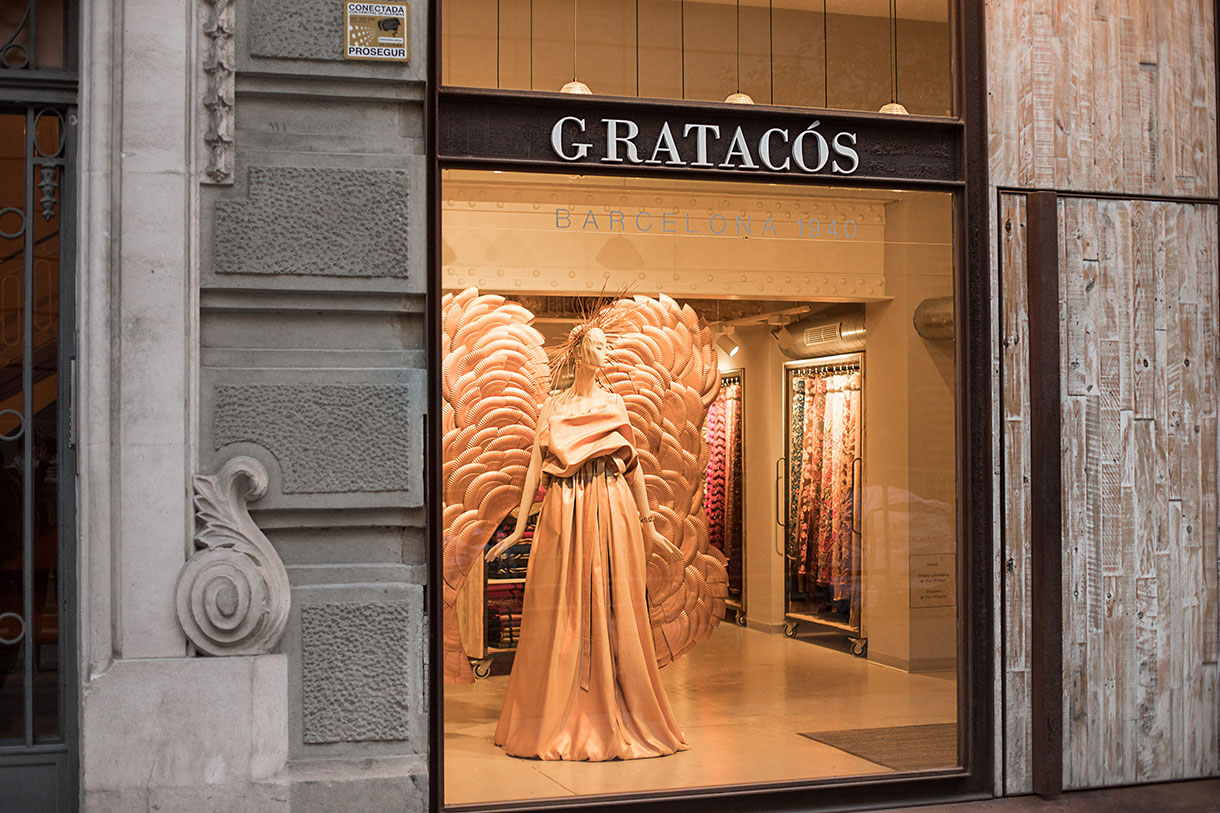
Beyond our suggestions, we also invite you to enter our space in Barcelona to see the latest novelties and we want to surprise you with our new showcase of festive themes that IED Barcelona students have devised for these very special dates. The heavenly inspiration with an angel as main theme serves as a context to express the most glamorous femininity in a bewitching look in pink tones, which empowers and attracts all eyes. Happy Holidays to all!
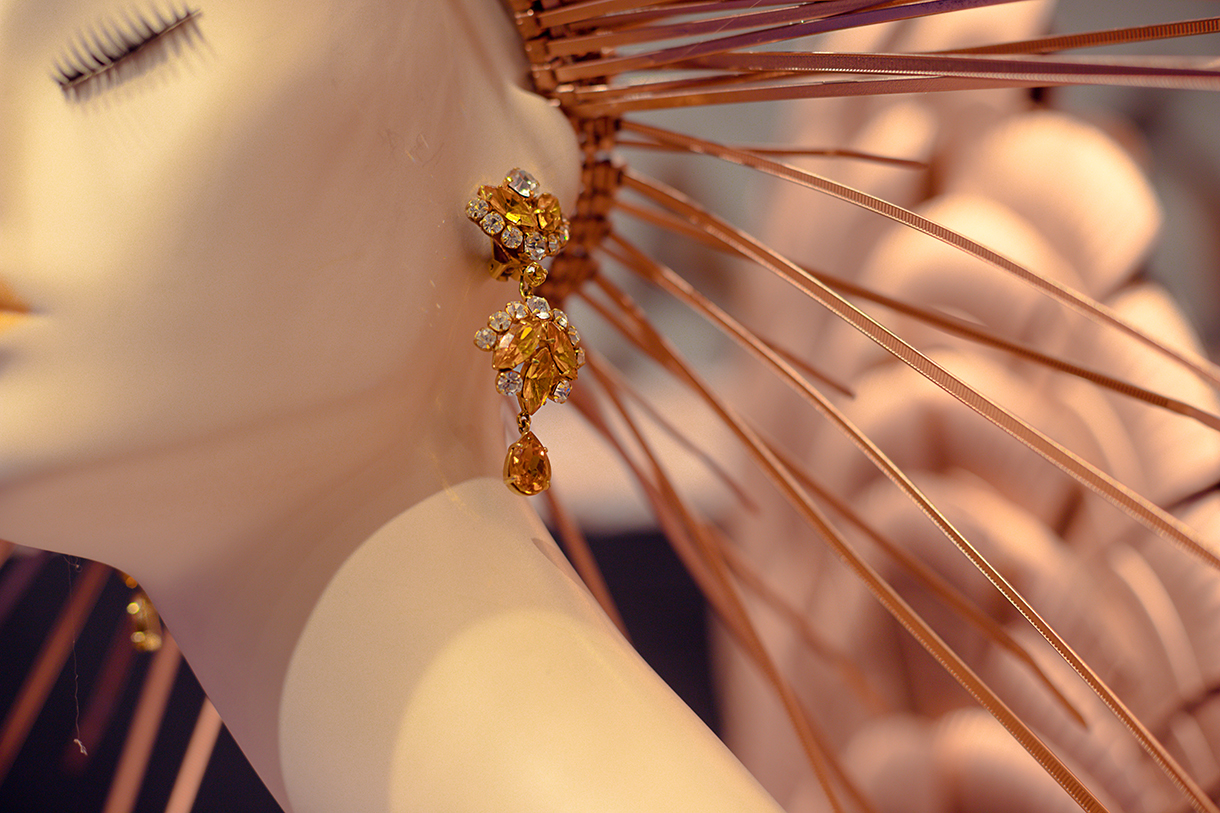
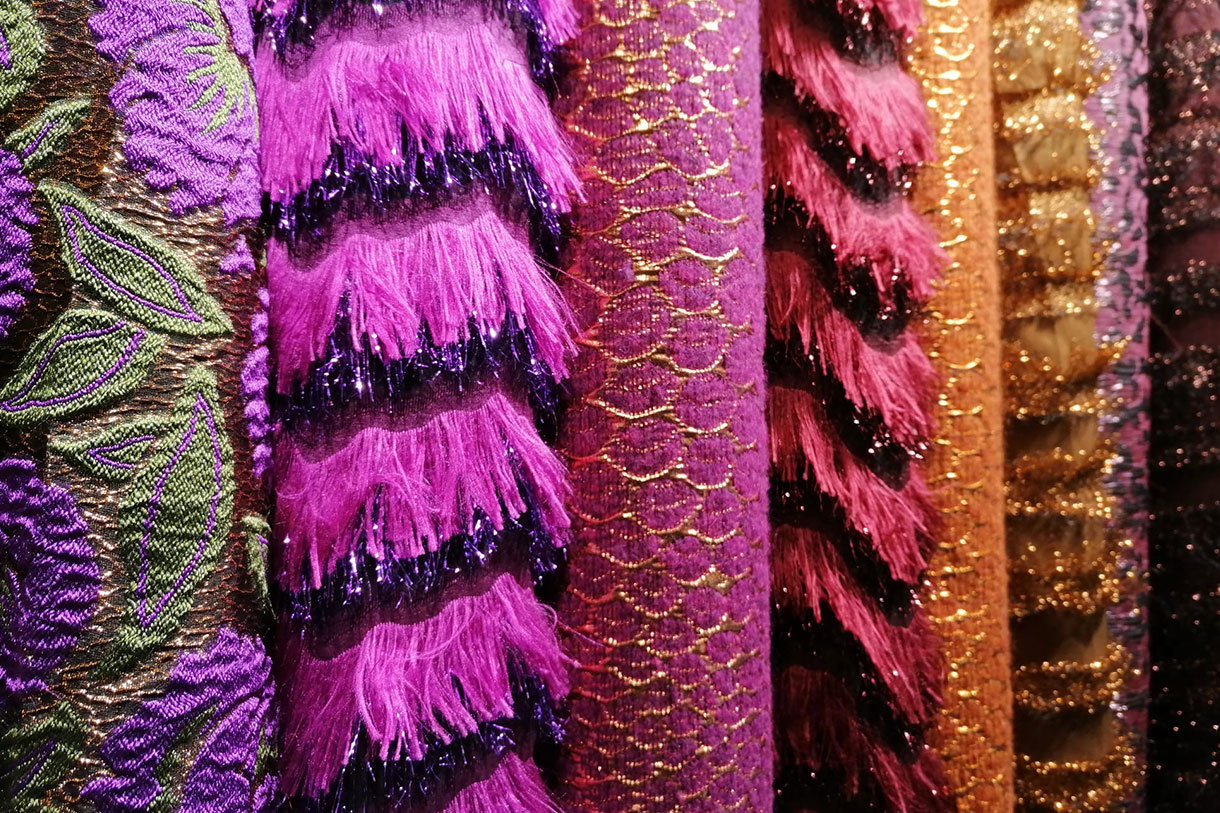
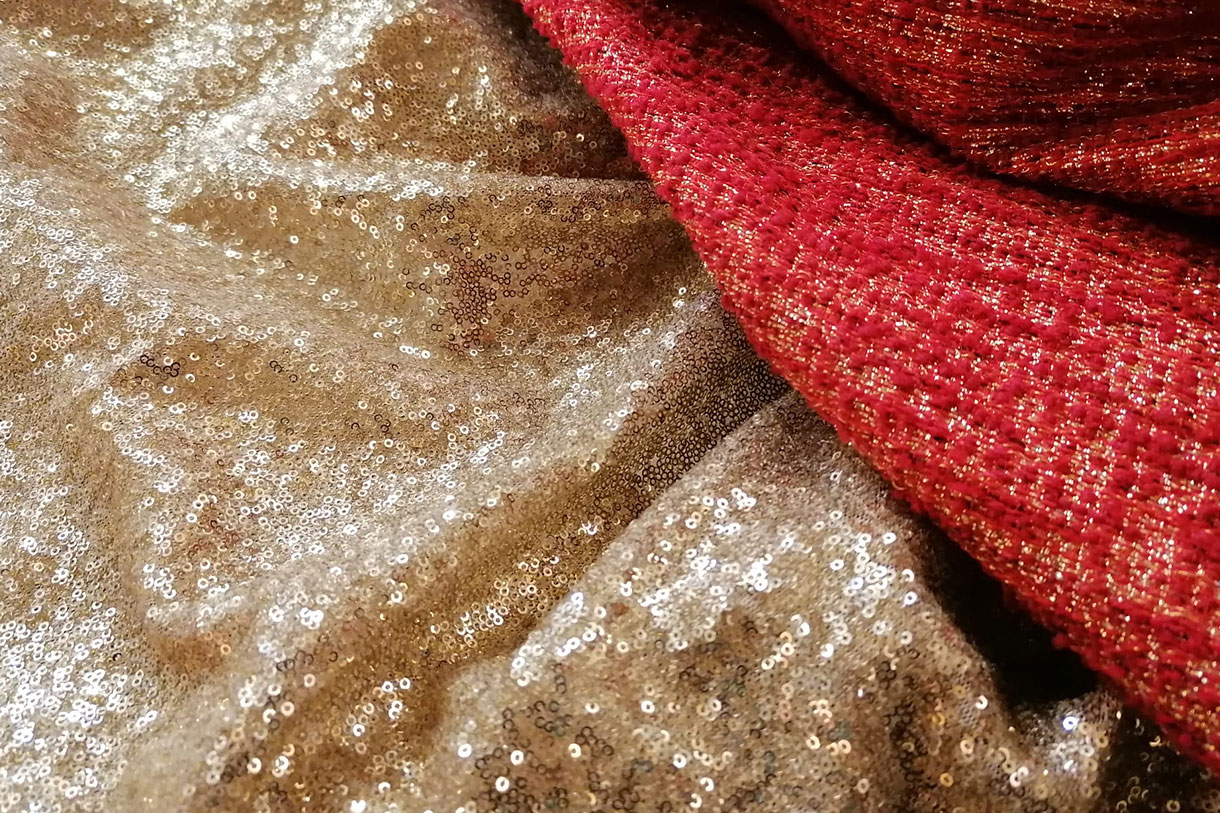
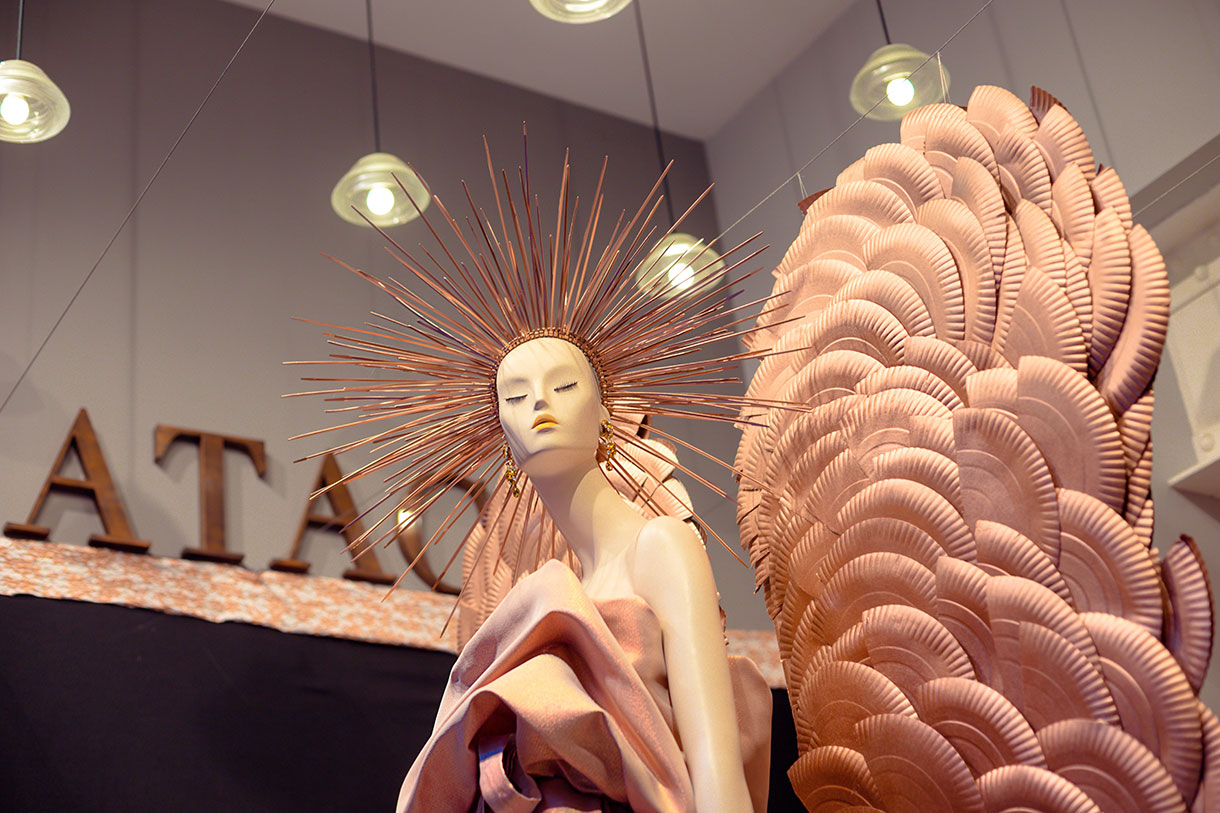
 An enfant terrible is a precocious genius with brilliant ideas, but with a rebellious and transgressive attitude, whose creations are innovative and offer a new disruptive vision, far from the traditional, orthodox or conventional. John Galliano, Jean-Paul Gaultier, Alexander McQueen are some of the most international enfants terribles in fashion. In our country there are also provocateurs of the thread and the needle. Some of the most notorious names are recovered by the FundaciÃģ Antoni de Montpalau together with the FundaciÃģn Rocamora in a new exhibition entitled ‘DaviddelfÃn and other enfants terribles of fashion’ that opened on February 6th in Barcelona. The exhibition consists of an exhaustive compilation of the work of the designer from Malaga, unique in Catalonia, together with the groundbreaking and provocative trajectory of other Spanish designers, from the 1980s to the present.
An enfant terrible is a precocious genius with brilliant ideas, but with a rebellious and transgressive attitude, whose creations are innovative and offer a new disruptive vision, far from the traditional, orthodox or conventional. John Galliano, Jean-Paul Gaultier, Alexander McQueen are some of the most international enfants terribles in fashion. In our country there are also provocateurs of the thread and the needle. Some of the most notorious names are recovered by the FundaciÃģ Antoni de Montpalau together with the FundaciÃģn Rocamora in a new exhibition entitled ‘DaviddelfÃn and other enfants terribles of fashion’ that opened on February 6th in Barcelona. The exhibition consists of an exhaustive compilation of the work of the designer from Malaga, unique in Catalonia, together with the groundbreaking and provocative trajectory of other Spanish designers, from the 1980s to the present.














 They have done it again.
They have done it again. 















